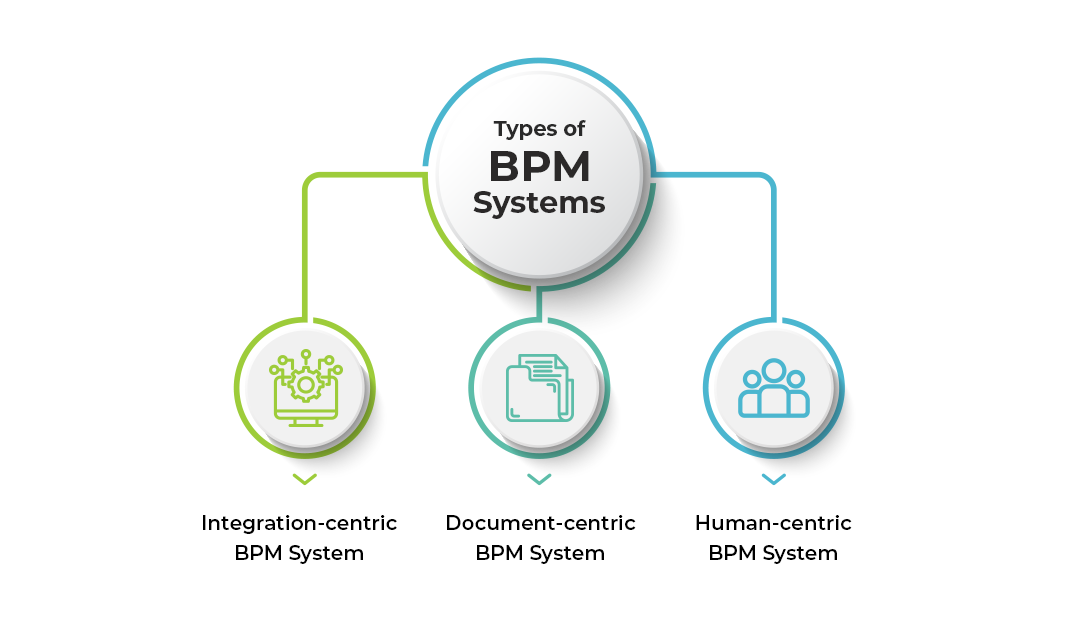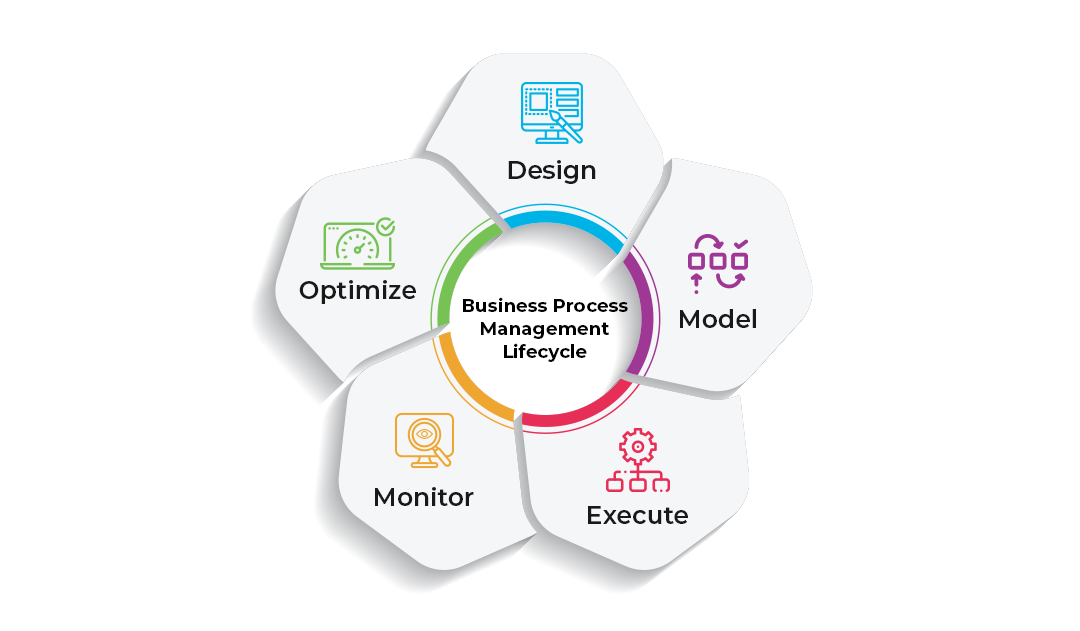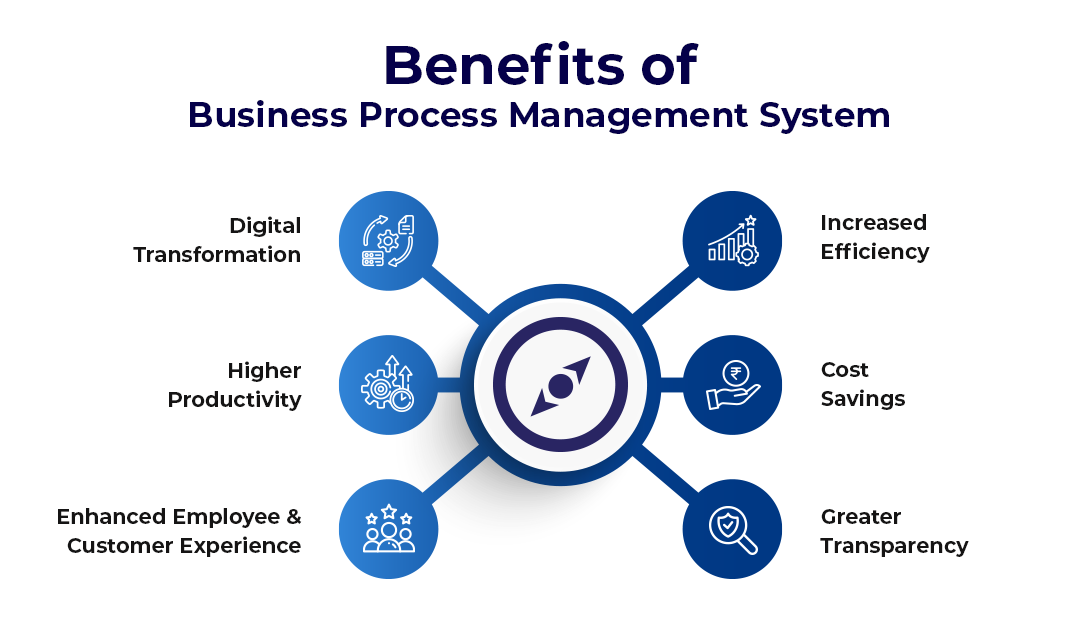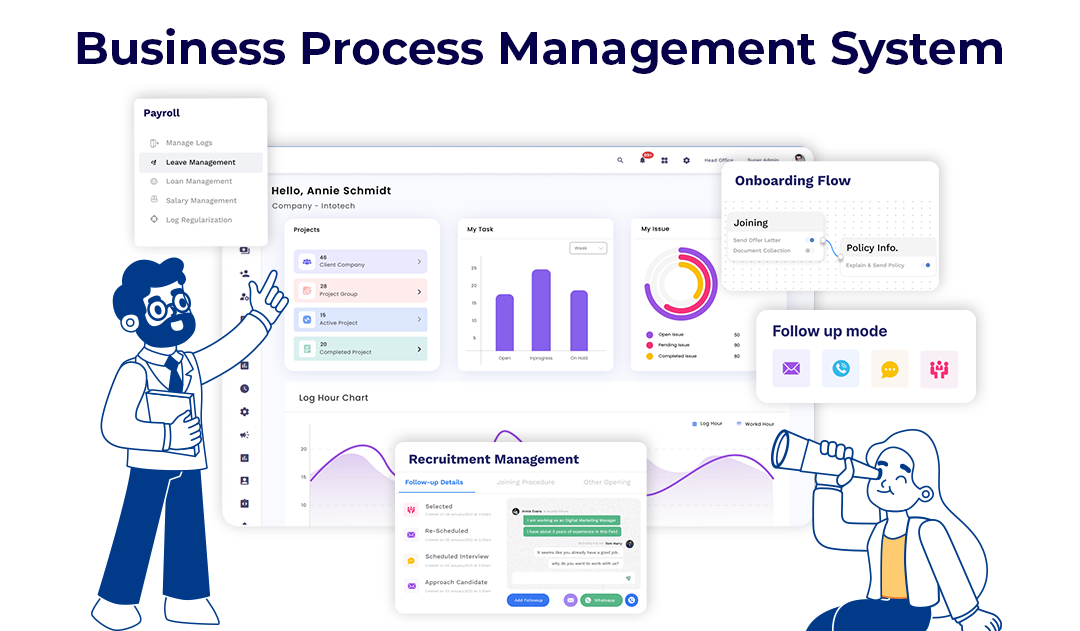Content
- introduction
- Business Process Management (BPM) System
- Importance of Business Process Management System
- The functionality of the Business Process Management System
- Different Types of BPM Systems
- Lifecycle Steps of BPM System
- Challenges in Adopting the BPM System
- Benefits of using a Business Process Management System
- Conclusion
- Faq
introduction
The purpose of BPM technology is to navigate continuous improvement, scalability, and operational efficiency by using a standard aggregate approach. An organization takes a step back, examines business processes individually, analyzes the current state, and identifies areas of improvement to create a more efficient and powerful organization with the help of business process management.
A business process management system is more than a strategy. It is likely represented by some trends and a company-wide system that gradually evolved once executed. Teams can start carrying a goal-oriented direction toward their actions. Business processes decide how quickly and smoothly you achieve your business plans.
Here's a detailed guide to managing business processes using automation software.
Business Process Management (BPM) System
Business Process Management (BPM) integrates BPM systems and solutions that help organizations to achieve business objectives via process automation, management, and optimization. A business process management (BPM) system is a set of process management wherein individuals and teams employ different methods to invent, measure, enhance, and automate core business processes.
As a profession, the BPM system highlights improving business performance through well-organized and on-point management of business processes. So, evaluating and enhancing business processes to develop a more efficient and promising business is the ultimate goal of the business process management system.
BPM software solutions enable users to monitor their business processes efficiently. Thus, you can quickly discover core aspects of the daily operations and procedures for improvement. The primary goal of the BPM system is to reduce human errors, inefficiencies, and miscommunication among employees and teams.
Importance of Business Process Management System
If your business processes are unorganized and unsystematized, it can lead to failure. People only notice a single part of a process at the individual level. Very few can measure the total impacts of a business process, where it begins and completes, the critical data needed, and where possible obstacles and inefficiencies lie.
Complicated and Unmanaged procedures damage business and direct to one or more of these concerns:
- Time wasted
- More mistakes
- Increased blame
- Lack of data
- Discouraged employees
Therefore, Organizations can enhance their processes by involving a business process management system and maintaining all operations optimally.
Business process management system assists organizations in improving efficiency, productivity, and agility. It involves defining, designing, managing, and continuously enhancing organizations' processes to produce satisfactory services. Streamline processes, reduce costs and improve the quality of products and services with BPM systems.
In addition, the BPM system helps organizations be more responsive to altering customer and market needs that adapt to recent technologies and business models quickly. So, organizations can evolve more competitively and acquire long-term success by effectively operating business processes.
The functionality of the Business Process Management System
Processes are naturally managed using visualization. Some Business Process Management Systems provide a user interface on which the processes are modeled. Instead, some apps can alone represent a process and specify weak parts by extracting the relevant facts from a limited amount of data. Therefore, multiple functionalities are presented,
- Mapping and Analysis of Current Business Processes
In this stage, the processes are seen to be the most appropriate and optimized. A detailed representation of the actual condition is the first action. A BPM system diagram is often used in some user-friendly settings, and appropriate business process management software should also address this matter.
- Improvement and Automation of Workflows
Possibilities for improvement are already apparent after the essential procedures have been summarized. It may be required to alter specific technical details and roles. But a helpful business process management system should offer the ability to automate and increase efficiency. Though, this functionality is only sometimes present.
- Controlling and Monitoring Workflows
Even after optimization, your process will only sometimes function perfectly. For this reason, many business process management systems allow you to monitor your operations continuously. Reporting can also help to manage process audits and data collection.
Different Types of BPM Systems

Three different types of business process management systems are generally used in businesses today:
- Integration-centric BPM System
Integration-centric BPM system used where less human involvement is required. It focuses on integrating and automating business processes that involve multiple systems. These processes depend more on APIs and enterprise service buses (ESBs) to connect different systems and applications (CRM, ERP, and HRMS), enabling them to exchange data and information in real time. It raises the speed of implementation and limits human errors.
- Document-centric BPM System
Document-centric BPM system is utilized when a document is the basis of the process. The primary purpose of the process is to send the document to considerable approvers in the workflow and get it approved. It enables formatting, verification, validating, and signing documents, reducing the need for emailing documents back and forth. You can securely control losing the document and data in the content drive.
- Human-centric BPM System
In a human-centric process, most of the processes are done by humans. Humans manually decide what occurs after each step in the process. So, here the automation step is limited. Hence, a human-centric BPM system is planned to be human-friendly, and processes require employee approvals. It offers a visual interface and notifications so employees can easily understand and manage the process.
Lifecycle Steps of BPM System

A meaningful BPM system initiates by describing the stages involved in a workflow. It helps to recognize improvement areas and metrics to measure progress. Organizations can improve their procedures by applying business process management software, leading to more promising business outcomes. Understand the complete BPM lifecycle for accomplishing these results. Here are the five BPM lifecycle stages:
- Design
Design a rough framework of the process that contains a form to accumulate data and a workflow to process further. So the team can identify who will own each task in the workflow. Specify the areas for process optimization and the subsequent metrics to track its improvement. It enables you to run processes perfectly while complying with business regulations.
- Model
After designing, transfer it to a BPM system and model the process. During this step, you must describe the process digitally to represent the workflow sequences visually. BPM modeling or process modeling can also be portrayed as a graphical illustration expressing a process's steps. It makes the process framework more efficient and helps you to do this with deeper visibility into your process channel.
- Execute
Once you have illustrated your processes for easy use, you need to execute them. But workflows still need to be entirely error-free, so you need to deploy it in a testing environment or by a small group of users before making it live. Set predefined business rules and train your employees on how the new process operates and their responsibilities. A BPM system does that for you, providing compelling workflow automation chances for optimizing your procedures further.
- Monitor
You should monitor processes every time to control mistakes and spot improvement opportunities by monitoring and reviewing processes in real-time. Business process monitoring is essential in the BPM lifecycle as its advantages outweigh successful problem prevention. Earlier identified KPIs are also scanned to ensure that the process aligns with the organization's overarching goals.
- Optimize
Utilize the insights from the Analysis to improve the performance of the process and continuously optimize the process for better efficiency. BPM system optimization allows you to strengthen individual processes' alignment with your overarching business objectives with constant advancement efforts. The optimization is generally done with the help of several business process automation and process management systems.
Challenges in Adopting the BPM System
BPM systems can be tricky and challenging, so organizations may suffer several obstacles as they perform to enhance and optimize their processes. Here are some common challenges in the BPM system:
- Management Process Changes
Executing new techniques often demands significant transformations to an organization's systems and procedures, which is time-consuming for employees to adapt.
- Lack of Exact Goals and Objectives
With clear goals and objectives, it is easy to decide whether your BPM systems are successful and paying off or whether you must specify areas for improvement.
- Insufficient Resources
BPM systems may require more resources like time, money, and human force, which could be problematic.
- Complexity
Some processes can be tough to understand, making it challenging to recognize inefficiencies and improvement.
- Oppose Change
Employees may refrain from resisting changes to their current processes, even if required, for the organization's long-term success.
- Integration with Other Systems
Need to integrate with other technologies and systems that can be time-consuming.
You can boost the chances of success for your Business Process Management systems by overcoming and managing these challenges.
Benefits of using a Business Process Management System
 BPM systems raise organizational value through process improvement, delivering several benefits.
BPM systems raise organizational value through process improvement, delivering several benefits.
- Digital Transformation
Digital adaptation is the initial purpose of IT leaders. It is about leveraging digital technology to improve the employees' and customers' performances. Business Process Management Systems fulfill it entirely and make processes more efficient. Users can build simple workflow-based applications on their own without IT support.
- Higher Productivity
A business Process Management System provides an adaptable environment to prevent manual tasks, redesign procedures, and strategically align the processes with the organization's objectives. So, employees can save additional time and concentrate on more important work, which improves productivity.
- Enhanced Employee and Customer Experience
BPM system assists in eliminating repetitive work and in creating information more accessible. Employees can focus on their work and customers without distractions, increasing customer satisfaction. Transparent workflows and cross-functional collaboration are the keystones of employee experience and customer engagement, with clearly defined business process management that saves time for focusing on other critical tasks.
- Increased Efficiency
BPM systems optimize existing processes and contain more configuration for developing new processes. It removes process tedium and obstructions that result in improved efficiency and productivity. Businesses can perform their intended business results at a faster rate, and they can assign excessive resources to other high-priority work.
- Cost Savings
You can diminish unnecessary spending with business process management systems. As the BPM approach delivers a better performance, mapping and analyzing the processes, you can determine the cost savings, reduce waste, and take avoided action.
- Greater Transparency
The BPM system provides better transparency, which refers to increased revenues and accountability throughout a process. It stimulates clear communication among teams for task assignments.
Conclusion
You can learn why you should consider a business process management system from the above. Make a reliable BPM system with our Bizcompass platform to create smooth business procedures. You can also run an efficient and elegant business with the consistent BPM method.
In the IT industry, the BPM system has bright future scopes. Here at Bizcompass, we provide an all-in-one business process management system using our solutions. We offer you an effective system to elevate your business to a new height of productivity. It will lead to excellence which is an ongoing process.
Upgrade your technological business growth with our Bizcompass Business Process Management System.


 >
>


